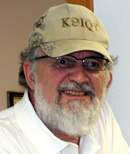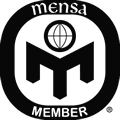Selected portions of the BloostonLaw Private Users Update, a newsletter from the Law Offices of Blooston, Mordkofsky, Dickens, Duffy & Prendergast, LLP are reproduced in this section with the firm's permission. 
NTIA Seeks Comment On FirstNet's Conceptual Network Architecture The National Telecommunications and Information Administration (NTIA) has issued a Notice of Inquiry (NOI) on behalf of the First Responder Network Authority (FirstNet) to seek public comment on the conceptual network architecture presentation made at the FirstNet Board of Directors' meeting held on September 25, 2012, as well as to invite input on other network design and business plan considerations. NTIA also seeks comment on the general concept of how to develop applications for public safety users as discussed at the FirstNet Board meeting. FirstNet intends to use the input received from this process to shape its efforts to establish the interoperable public safety broadband network based on a single, nationwide network architecture called for under the Middle Class Tax Relief and Job Creation Act of 2012 (Act). Comments in this NTIA Docket No. 120928505-01 proceeding are due November 1, at 5 p.m. EDT. FirstNet is particularly interested in receiving innovative ideas on how it can deploy a reliable, ubiquitous, redundant, and interoperable broadband network for public safety users. NTIA invites the submission of proposals that address the following criteria: - Meets public safety's requirements for priority, quality of service, and preemption features;
- Uses, to the extent possible, existing radio access network and core network infrastructure installed by commercial mobile operators in order to maximize the coverage and performance delivered to public safety while minimizing the capital expenditures;
- Reaches operational capability as quickly as possible; and
- Enables voice services (cellular telephony and push-to-talk (PTT)) both within the FirstNet network as well as to/from other commercial networks, including the public switched telephone network (PSTN).
Any proposal submitted in response to this NOI should: - describe all of the assumptions necessary for the proposal to succeed;
- identify the specific opportunities or benefits the proposal provides in meeting the Act's objectives and the criteria enumerated above;
- discuss any existing challenges or obstacles that must be overcome to realize the proposal; and
- specify any areas in need of further research and development to ensure the success of the proposal.
FCC Actions Regarding FirstNet Last month, the FCC adopted a Report and Order (R&O) that reallocated the D Block for "public safety services" and eliminated those rules establishing (providing license authority with respect to) and governing operations of the Public Safety Broadband License (PSBL), as well as the rules providing for the associated public-private partnership with a D Block licensee. The FCC also issued a Public Notice announcing its intent to grant to the First Responder Network Authority (FirstNet), as expeditiously as possible, a nationwide license for use of the existing public safety broadband spectrum and the 700 MHz D Block, i.e., the 758-769 and 788-799 MHz bands, as required by Section 6201(a) of the Middle Class Tax Relief and Job Creation Act of 2012 (Public Safety Spectrum Act). 
FCC Adopts Proposals for First-Ever Incentive Auction Of TV Band Spectrum FCC Plan Would Make Some TV Spectrum Available for Unlicensed Use by Private Users, Others The FCC, at its September open meeting, adopted a Notice of Proposed Rulemaking (NPRM) aimed at repurposing broadcast television spectrum for mobile broadband use through the use of incentive auctions, as contemplated by Congress. The idea of using incentive auctions was originally discussed in the National Broadband Plan as a market-based mechanism to reallocate spectrum for next-generation uses by offering broadcast television licensees financial incentives to relinquish all or part of their licensed spectrum. A portion of the proceeds from a subsequent auction of this spectrum would be used to compensate participating broadcasters, and the remainder would be deposited in the Public Safety Trust Fund (PSTF) to fund a national first responder network, state and local public safety grants, public safety research, and national deficit reduction. The Commission voted to approve the Incentive Auction NPRM (formally called "Expanding the Economic and Innovation Opportunities of Spectrum Through Incentive Auctions"), and it seeks comment from the public and interested stakeholders. Congress anticipated that the broadcast incentive auction would have three major elements: First, a "reverse auction" in which TV broadcast licensees would submit bids to voluntarily relinquish their spectrum rights in exchange for a share of later auction proceeds; second , a "repacking" of the remaining broadcasters into a smaller band segment, freeing up a contiguous portion of the ultra-high frequency (UHF) band for other uses; and third , a "forward auction" of initial licenses for flexible use of the newly available UHF spectrum. The reverse auction proposal brings up three broad issues: - bid submission,
- determination of which bids are accepted, and
- determination of payment amounts to winners. The FCC seeks comment on all of these issues, for example, whether to collect sealed bids or use a multiple round bid collection format such as a descending clock auction.
Repacking involves reorganizing the broadcast television bands so that the television stations that remain on the air after the incentive auction occupy a smaller portion of the UHF band, subject to interference and other constraints imposed by the Spectrum Act and treaties with Canada and Mexico. The forward auction will resemble competitive bidding procedures that the Commission has utilized in the past, but with some important differences. In particular, the FCC will not know in advance the amount of spectrum it can make available in the forward auction, or the specific frequencies in any given geographic location, until the reverse auction and repacking are completed. Accordingly, instead of a single band plan with identified frequencies, a set number of spectrum blocks and a uniform set of geographic area licenses, the auction design must provide a framework that is flexible enough to accommodate varying amounts of newly available spectrum in different locations. More specifically the notice seeks comment on the following issues: Auction Design. The FCC seeks comment on auction design choices and the tradeoffs they present. For both the reverse and forward auctions, it invites comment on different procedures to collect bids, determine which bids are accepted, and what each bidder pays or receives in payment. The Commission also seeks comment on methodologies for the repacking process, which is part of the process for determining which broadcaster bids will be accepted in the reverse auction. And the FCC seeks comment on an Incentive Auction Rules Option and Discussion report prepared by Auctionomics and Power Auctions illustrating a comprehensive approach to the auction design choices presented. Further, the FCC invites comment on how to design the incentive auction so as to facilitate the participation of a wide array of broadcasters and make it as easy as possible for them to submit successful bids. Participation in the Reverse Auction. The FCC said it interprets the Spectrum Act to limit eligibility to participate in the reverse auction to commercial and noncommercial full power and Class A broadcast television licensees. The FCC invites comment on whether to establish reverse auction bid options including but not limited to those identified in the Spectrum Act (to go off the air, to move from a UHF to a VHF television channel, and to share a channel). Repacking. The FCC invites comment on how to implement Congress's mandate to make "all reasonable efforts" to preserve the "coverage area and population served" of television stations as of the date of enactment of the Spectrum Act. In particular, it proposes to interpret "coverage area" to mean a full power television station's "service area" as defined in the Commission's rules, and the agency seeks comment on several approaches to preserving population served. 600 MHz Band Plan. The FCC seeks comment on a band plan for reclaimed broadcast television spectrum using 5 megahertz blocks, in which the uplink band would begin at channel 51 (698 MHz) and expand downward toward channel 37 based on the amount of reclaimed spectrum, and the downlink band would begin at channel 36 (608 MHz) and likewise expand downward. The FCC seeks comment on establishing 6 megahertz guard bands between mobile broadband use and broadcast use, and proposes to make this guardband spectrum available for unlicensed use. In addition, it seeks comment on a number of alternative band plan approaches. Channel 37. The FCC invites comment on whether to relocate the Radio Astronomy Service and wireless medical telemetry systems now operating on channel 37, and on whether and how to address the post-auction availability of UHF band spectrum for fixed broadcast auxiliary stations, low power auxiliary stations, and unlicensed wireless microphones. Unlicensed Use of Spectrum. The FCC invites comment on measures that would make a substantial amount of spectrum available for unlicensed uses, including a significant portion that would be available on a uniform nationwide basis for the first time. Television white spaces will continue to be available for unlicensed use in the repacked television band. In addition, the FCC seeks comment on making the guardband spectrum in the 600 MHz band plan available for unlicensed use, making channel 37 available for such use, and making two channels currently designated for wireless microphone use available for white space devices. Transition. The FCC seeks comment on how to implement the repacking of broadcast television spectrum and clear the reclaimed spectrum as expeditiously as possible while minimizing disruption to broadcast television stations and their viewers. In particular, the Commission proposes streamlined broadcast license modification procedures, invites comment on reasonable deadlines for stations to transition to any new channel assignments or cease broadcasting, and proposes to allow stations eligible for reimbursement of relocation costs to elect between actual cost-based payments or advance payments based on estimated costs. The text of this NPRM in this GN Docket No. 12-268 is available online as FCC 12-118 . Of particular interest is the separate statement of Commissioner Ajit Pai, who approved in part, and concurred in part with the decision. He said that if the FCC makes the right decisions, "We will free up badly needed spectrum for mobile broadband, which will promote infrastructure investment, economic growth, and job creation. We will preserve a vibrant and free, over-the-air broadcast service, including by providing needed funding for those that wish to stay in broadcasting but choose to channel share or move to Very High Frequency (VHF) spectrum. And we will raise financial resources to help build a nationwide public safety broadband network, reduce the federal budget deficit, and advance next-generation 911 service. If, on the other hand, we do not get this right, we could end up with a Rube Goldberg contraption that will produce a failed auction." While voting for the item, Commissioner Robert McDowell said he would be following a number of important issues. These include the following: - Whether the proposed five megahertz channel blocks would result in a band plan that reserves too much spectrum for unlicensed use, contrary to Congress's explicit intent;
- Or, whether auctioning spectrum in six megahertz channels, that is, on a broadcast channel-by-channel basis, would be more intuitive and thus lead to a more efficient and fruitful auction;
- Whether the Commission will attempt to adopt rules or policies that run contrary to the directives of the statute either directly or indirectly;
- Whether adopting six megahertz guard bands (as proposed) is necessary to prevent harmful interference given the technological improvements that may come over the horizon after we adopt rules;
- Whether the proposals for determining future broadcast channel assignments and reverse auction winners would result in a process that is as objective and transparent as it must be;
- Whether issues related to the coexistence of Lower 700 MHz A Block operations and those of neighboring TV channel 51 are resolved prior to the auctions;
- Whether imposing spectrum caps prior to the auction would exclude specific potential bidders thus producing the net result of frustrating Congress's directive that the Commission attempt to raise at least $7 billion for a nationwide, interoperable public safety network; and
- Whether the Commission would be able to finish its work without undertaking a further notice and comment. This being — literally — the most complex spectrum auction in world history, I think we should keep all of our options open, including measuring twice before making the cut, as carpenters say.
LEARN Program. In conjunction with the Incentive Auction NPRM, the FCC launched the Broadcaster LEARN (Learn Everything About Reverse-Auctions Now) Program. The LEARN Program is designed to offer broadcasters valuable information about the unique financial opportunities of incentive auctions and engage the broadcaster community throughout the entire incentive auction planning, design and execution processes. The first LEARN Program workshop is scheduled for Friday, October 26, 2012. More details on this workshop will be announced soon. 
xG Demos Cognitive Radio Technology For FCC Staff xG Technology recently met with FCC staff to describe the latest developments in cognitive radio technology, including its rapid deployment and its interference avoidance and mitigation capabilities, in meeting public safety and homeland security goals in emergency and mission critical situations. The xG presentation included a live demonstration of a self-contained, single-cell xMax system in a commercially obtained vehicle that had an antenna mast and satellite uplink equipment installed. The demonstration used commercial off-the-shelf (COTS) electronic equipment that was used to send and receive push-to-talk calls, voice calls, text messages, and Internet data applications through the use of preproduction versions of the xMod (an xMax to WiFi, USB, Ethernet bridge) and the xMax system to and from various locations. The entire demonstration was successfully conducted in the unlicensed 900 MHz spectrum in the Washington, D.C., area. We note that xG is a BloostonLaw client. 
LightSquared Proposes To Share NOAA Spectrum Bankrupt LightSquared has proposed to share spectrum the federal government uses for weather balloons with the L-Band satellite spectrum the company already holds to launch its controversial Long Term Evolution (LTE) network, according to FierceBroadbandWireless. LightSquared approached the FCC with a proposal under which the company would combine the 5 MHz it uses for satellite service at 1670-1675 MHz with frequencies in the 1675-1680 MHz band, currently used by National Oceanographic and Atmospheric Administration (NOAA) weather balloons, said PCWorld. The company would share the NOAA spectrum rather than gaining exclusive rights to it. Such an arrangement would give the company 10 MHz for downstream LTE traffic. The company would employ another pair of bands totaling 20 MHz—which it uses for satellite services now—for LTE traffic going upstream from users' mobile devices, said PCWorld. The total 30 MHz of spectrum would be 10 MHz less than LightSquared had originally intended to use for its LTE network. According to FierceBroadbandWireless, "LightSquared is licensed for MSS operation in portions of the 1525-1544 MHz and 1545-1559 MHz downlink bands and the 1626.5-1645.5 MHz and 1646.5-1660.5 MHz uplink bands. LightSquared's spectrum in the 1525-1559 MHz block sits below spectrum allocated for GPS. Most GPS devices are not designed to ignore out-of-band signals, such as those produced by LightSquared's proposed network, which led the FCC to cancel LightSquared's conditional waiver for terrestrial service earlier this year." 
FCC Seeks Comment On GAO Regulatory Fees Report The FCC's Office of Managing Director has requested comment on the Government Accountability Office (GAO) report titled, Federal Communications Commission, Regulatory Fee Process Needs to Be Updated. In its report, GAO, observes, among other things, that the Regulatory Fees Reform Notice of Proposed Rulemaking (NPRM), released July 17, "proposes some fundamental changes to FCC's regulatory fee program that relate to many of the concerns raised in this report." The NPRM sought comment on proposals to reform the Commission's policies and procedures for assessing and collecting regulatory fees. The Commission published this Regulatory Fees Reform NPRM in the Federal Register, establishing a comment deadline of September 17, 2012 and reply comment deadline of October 16, 2012. The FCC has now extended those comment deadlines to include the GAO Report. Comments in this MD Docket No. 12-201 proceeding are now due October 9 for the GAO Regulatory Fees Report, and replies are due October 23 for both the report and the Regulatory Fees Reform NPRM. 
Diamond Gets Waiver Of Tower Inspection Rules The FCC has issued a Memorandum Opinion and Order granting the joint petition of Diamond Communications LLC, Diamond Towers LLC, Diamond Towers II LLC, and Diamond Towers III LLC for waiver of Section 17.47(b) of the Commission's Rules. This section provides that the owner of any antenna structure that is registered with the Commission and has been assigned lighting specifications pursuant to Part 17 "[s]hall inspect at intervals not to exceed 3 months all automatic or mechanical control devices, indicators, and alarm systems associated with the antenna structure lighting to ensure that such apparatus is functioning properly." Diamond estimates that it will spend over $105,000 and over 2,000 person-hours annually complying with the quarterly inspection requirement for the towers subject to its petition. Diamond argues that the quarterly inspections of antenna structure lighting monitoring systems mandated by Section 17.47(b) of the Rules have been rendered unnecessary for its towers that employ the Flash Technology Tower Monitoring System (FTTMS) because of technological advancements associated with that system. Diamond asked the Commission to waive the rule to permit annual inspections instead for Diamond's antenna structures that use this system. The FCC granted Diamond request for relief from its obligations as tower owner under Section 17.47(b) of the Commission's Rules to perform quarterly inspections of the monitoring systems on these towers, and instead permit it to perform annual inspections. The FCC further determined, on its own motion, that it will grant similar waivers to other tower owners using the FTTMS, in an expedited manner, upon submission and review of a streamlined petition containing certain certifications. 
FCC Proposes $8,000 Fine For Unauthorized Use Of Handheld Radios The FCC has issued a Notice of Apparent Liability for Forfeiture and Order (NAL), proposing to fine Bryn Mawr Hospital, licensee of Private Land Mobile Radio stations in Bryn Mawr, Pennsylvania, $8,000 for apparently willfully and repeatedly violating Section 301 of the Communications Act and Sections 1.903(a) and (b) of the Commission's rules by operating radio transmitting equipment on unauthorized frequencies. The FCC further directed Bryn Mawr Hospital to submit a written statement signed under penalty of perjury, within 30 calendar days from release of the NAL, stating that it is now operating its radio transmission equipment consistent with Section 301 of the Act and Sections 1.903(a) and (b) of the Commission's rules. During inspections on October 12, 2011 and October 13, 2011, Enforcement Bureau agents found that Bryn Mawr Hospital was operating handheld radios on the frequency 469.4875 MHz and a repeater system on the frequency pair 464.4875 MHz/469.4875 MHz. Bryn Mawr Hospital violated the foregoing sections of the Act and Rules because its FCC licenses for Private Land Mobile stations WPUT970 and WQCB705 do not authorize operation of handheld radios on the frequency 469.4875 MHz or a repeater system on the frequency pair 464.4875 MHz/469.4875 MHz. 
FCC Fines James Cable For Failing To Repaint Tower The FCC has issued a Forfeiture Order (Order), fining James Cable, LLC, owner of antenna structure number 1016806 in Durant, Oklahoma (the Antenna Structure), $10,000 for willful and repeated violation of Section 17.50 of the Commission's rules (Rules). The noted violation involved James Cable's failure to clean or repaint the Antenna Structure as often as necessary to maintain good visibility. The FCC said it is undisputed that, during the inspection by FCC officials on September 6, 2011, the paint on the Antenna Structure was severely faded and chipped and the structure was in need of repainting. Thus, based on the evidence, the FCC issued the forfeiture to James Cable for willfully and repeatedly violating Section 17.50 of the Rules by failing to clean and repaint the Antenna Structure to maintain good visibility. 
Chicago Seeks Waiver Of Narrowbanding Deadline The FCC's Wireless Telecommunications Bureau (WTB) seeks comment on a request for waiver of the Commission's January 1, 2013 VHF-UHF narrowbanding deadline, filed by the City of Chicago Office of Emergency Management Communications. Section 90.209(b)(5) of the Commission's rules requires private land mobile radio (PLMR) licensees in the 150-174 MHz and 450-512 MHz bands to operate using channel bandwidth of no more than 12.5 kHz, or equivalent efficiency, by January 1, 2013. Specifically, the City of Chicago is seeking a 24-month conditional extension of time to complete the narrowbanding of its VHF/UHF facilities by January 1, 2015. The City of Chicago is the third largest city in the United States, with 9.8 million inhabitants. The City of Chicago metropolitan area extends outside the county seat of Cook County, Illinois, into neighboring DuPage County. The City is comprised of approximately 234 square miles of urban landscape, including 6.9 miles of the Lake Michigan waterfront, and both the Calumet and Chicago rivers flow entirely or partially through key parts of the City. The City of Chicago is both the second largest central business district and labor pool in the nation, and hosts millions of domestic and international visitors each year as one of the most important worldwide international centers for commerce, finance, and trade. To help manage and protect the City's residents and visitors, Chicago employs thousands of first responders and other employees who require the use of public safety communications. However, due to budgetary and hiring constraints, the City employs only sixteen radio technicians, who are solely responsible for the maintenance, installation, and upgrading of the City's numerous and intricate radio systems. Despite limited manpower and resources, these technicians have been able to perform maintenance and to complete a significant number of necessary and mandated upgrades to the City of Chicago's extensive public safety radio networks. The City of Chicago's request describes its past and continuing efforts to bring its mission critical communications networks into compliance with the January 1, 2013 narrowbanding mandate, and states it is near completion of its multi-site UHF T-band fire digital system, among other public safety radio projects. The City of Chicago notes, however, that it has "been occupied in responding to other regional and national initiatives such as expanding its video surveillance system and engagement in Operation Virtual Shield in cooperation with the Department of Homeland Security and Department of Justice." The City of Chicago claims that it has been working diligently and in good faith towards narrowbanding, making substantial investments in new infrastructure and reprogramming existing equipment. However, because of budget constraints and the diversion of financial resources to other federal projects, the City of Chicago claims that it is unable to complete narrowbanding by the January 1, 2013 target. Therefore, given its considerable efforts towards narrowbanding to date, the City of Chicago contends that it is entitled to a waiver and extension of the deadline. Comments in this WT Docket No. 99-87 proceeding are due October 23, and replies are due November 2. 
FCC To Hold Workshop On Indoor Location Accuracy For Wireless 9-1-1 Calls The FCC's Public Safety and Homeland Security Bureau will host a workshop focusing on the upcoming Communications Security, Reliability, and Interoperability Council (CSRIC) test bed, and issues related to improving indoor location accuracy for wireless 9-1-1 calls. The workshop will take place on Wednesday, October 24, 2012, from 9:30 a.m. to 2:30 p.m. and will be held in the Commission Meeting Room at FCC Headquarters, located at 445 12th Street, SW, Room TW-C305, Washington, DC 20554. Public Safety entities can benefit from the proposed workshop. |

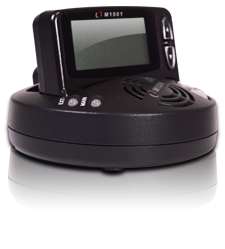



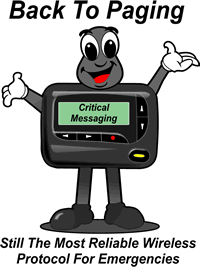






 We tend to think of paging as very “last millennium.” Yet while cell phones and text messaging have effectively terminated two-way paging, one-way paging remains a prevalent, critical communications tool in sectors such as EMS, hospitals and fire fighting. With the advent of digital radio technologies such as APCO P25, what options do emergency responders have to continue support for paging users?
We tend to think of paging as very “last millennium.” Yet while cell phones and text messaging have effectively terminated two-way paging, one-way paging remains a prevalent, critical communications tool in sectors such as EMS, hospitals and fire fighting. With the advent of digital radio technologies such as APCO P25, what options do emergency responders have to continue support for paging users? PAGERS & Telemetry Devices
PAGERS & Telemetry Devices 




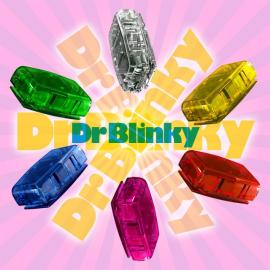



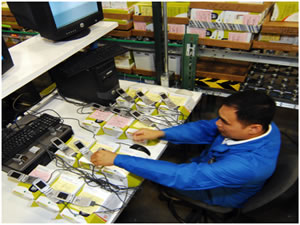


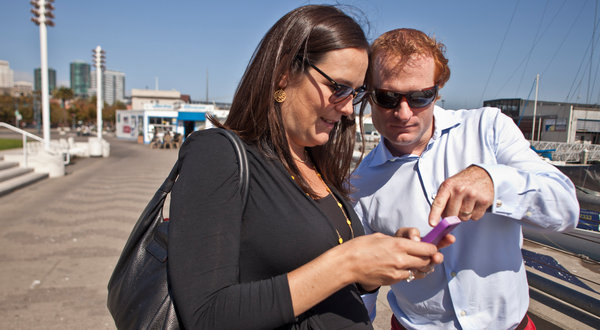



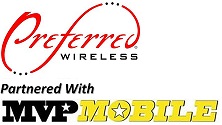
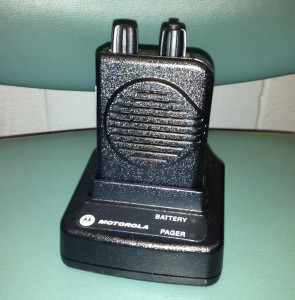







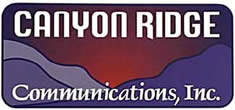




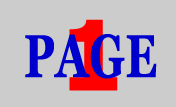







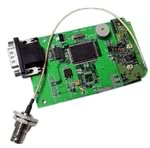


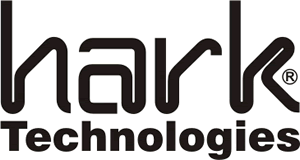
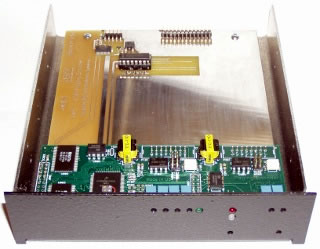

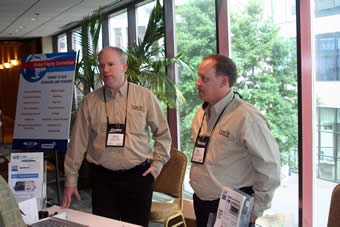 David George and Bill Noyes
David George and Bill Noyes

 Apple has invited select members of the press to an event Oct. 23 at the California Theatre in San Jose. The event begins at 10 a.m., and what attendees can expect then, Apple didn't say. Though it hardly needs to. Just as the date of the event has been long foretold by the rumor mills, so has the reason for the party: the introduction of a smaller iPad. Or, as it's come to be known until Apple dictates otherwise, the iPad Mini.
Apple has invited select members of the press to an event Oct. 23 at the California Theatre in San Jose. The event begins at 10 a.m., and what attendees can expect then, Apple didn't say. Though it hardly needs to. Just as the date of the event has been long foretold by the rumor mills, so has the reason for the party: the introduction of a smaller iPad. Or, as it's come to be known until Apple dictates otherwise, the iPad Mini.